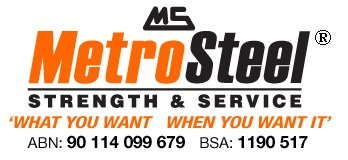We all know that steel is a versatile material and as such it’s made into a wide variety of products across a wide variety of applications. These include the construction, aerospace, and vehicle manufacturing industries and many more besides. However the term ‘steel’ covers a wide variety of metal alloys all with varying strengths and uses, but generally it can be placed into two broader categories these are carbon steel and stainless steel. So what are the main differences?
Two essential elements of any kind of steel are iron and carbon. Generally speaking steels containing a higher carbon content are harder and more brittle, whereas steels with a lower carbon content tend to be more pliable in that they can be drawn into a wide variety of shapes without losing strength.
So what exactly is carbon steel?
As you’ve probably guessed carbon steel contains a higher degree of carbon and when people talk about carbon steel they’re usually referring to the material used in knives and tools. So why use carbon steel? Because carbon steel is incredibly durable it makes them good at resisting abrasions and retaining their shape. As such they can withstand significant force before deforming. However when placed under extreme stretching or tensioning their low tensile ability means that carbon steel is way more likely to crack than to bend. However it isn’t always that clear cut because elements such as manganese, molybdenum, nickel chromium, and silicone can all be added in carefully regulated amounts to obtain a greater balance between ductility and strength.
What about stainless steel?
Generally speaking stainless steel contains the same elements of iron and carbon, but at lower levels, however it contains larger amounts of chromium. Normally at least 10.5%. This level of chromium is key because it reacts with the oxygen creating a natural protective layer that slows down the corrosion process. Ultimately it means that certain types of stainless steel can function in wet environments without rusting. What’s more, the higher the chromium content, the more resistant to corrosion the metal is. For this reason it does have a bearing on the cost. Stainless steel with 10.5% chromium is cheaper to buy than steel containing 16.5% chromium because it’s expected to have a longer shelf life.
So which should you buy?
Stainless steel and carbon steel are very different products and one isn’t necessarily superior over the other. Instead it’s all about the job you want the product to do and matching the grade of steel to fit those exacting requirements.
Here at Metro Steel we deliver stock and bespoke metal products to a wide variety of clients across a multitude of uses. So if you have a particular project in mind and aren’t sure which type of steel you need, contact our experienced team on 07 3204 1000 for advice.
 Talk to an Expert (07) 3204 1000
Talk to an Expert (07) 3204 1000 Working Hours - Mon – Fri 7:00 AM – 4:00 PM
Working Hours - Mon – Fri 7:00 AM – 4:00 PM